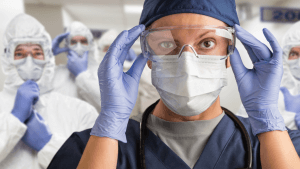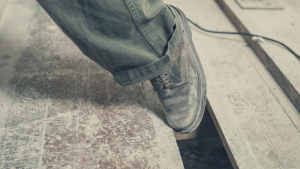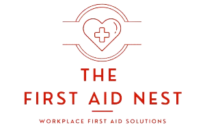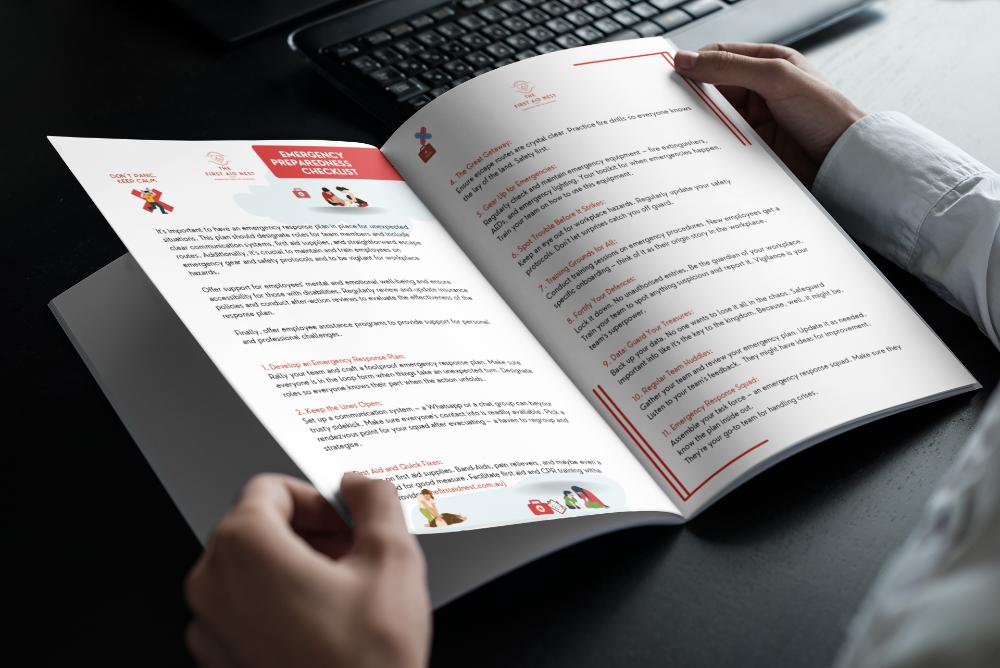6 Common Workplace Safety Hazards

Workplace Hazards
In 2020, 194 people were fatally injured at work. 96% of them were male and 4% were female.
This equates to one man dying at work every 2 days and one woman dying at work every 45 days.
These are striking statistics.
There are 6 main workplace hazards:
- Physical hazards
- Chemical hazards
- Ergonomic hazards
- Workload hazards
- Biological hazards
- Safety hazards
This last one, safety hazards, is the main culprit for workplace injury and death.
We will break down these hazards in the post below.
Physical hazards
These types of hazards may be caused while working outside, in harmful environments or around loud noises, and may include others such as:
- Radiation
- Extreme weather, sun rays
- Harmful environments
- Extreme noise
Chemical hazards
Exposure to chemicals can cause all sorts of illness including skin irritation, breathing issues, some even have cancer causing properties. Hospital domestic staff may be at high risk with this sort of hazard or people who work in a chemical manufacturing role.
- Harmful liquids
- Flammable gases
- Solvents
- Carbon monoxide
Ergonomic hazards
Ergonomic hazards are the type of hazards that can affect you when sitting at a desk or roles that affect your posture. Here is a list of potential ergonomic hazards:
- Repetitive strain
- Poor posture
- Forceful motions
- Stationary positions
- Direct pressure
- Poor/bright lighting
- Extreme temperatures
- Heavy lifting
Workload hazards
Workload hazards include issues that could cause stress or strain, such as workload, violence or aggression. A recent study of teachers found that 70% of them felt they could not balance work and private life. People who work alone may struggle to voice their worries or concerns and hazards may go unnoticed by supervisors or those who can help. Workload hazards may include:
- Workplace violence
- Isolated working
- Increasing workload
- Mental health issues
Biological hazards
Examples of industries that are affected by biological hazards are zoo keepers, veterinarians and sewage workers. Biological hazards can cause long term or even fatal injuries and should be taken very seriously.
- Medicines
- Chemicals from laboratories
- Building materials
- Infectious bodily fluids
- Human or animal waste

Safety Hazards
Safety hazards are applicable to those in construction sites and those working with heavy machinery. This could include
- Operating electrical machinery
- Falls, trips and slips
- Falling from a height
- Moving vehicles
- Heavy machinery
Workplace First Aid
You can see how and why it is so important that first aid training is a priority in workplaces
Interestingly this equates to 1.5 per 100,000 workers, which is a 50% decrease from 2007 where the numbers were 3 per 100,000.
So, is this a reflection of better workplace safety practices or is this a recent drop due to the COVID-19 shutdowns over the last two years when more people are working from home or not working at all?
68% of these fatalities were in three industries
- Transport, postal and warehousing
- Agriculture, forestry & fishing
- Construction
What are the causes of these workplace fatalities?
- Vehicle collision – 80 people
- Hit by a moving object – 25 people
- Falling from a height – 22 people
- Bystander fatalities (hit by vehicle or moving object) – 29 people
Most of these workplace fatalities are in men over the age of 55 years.
Workplace safety hazards can be vastly different depending on what industry you are in. Healthcare workers, hospital support workers, cleaners and supermarket employees have been some of the types of employees at a major risk for the last two through the COVID-19 pandemic.
We may see the future statistics of workplace fatalities change due to this.

Medical supplies
Having an appropriately stocked first aid kit for your workplace is essential. We can see from the statistics that crush injuries and heavy bleeding is a major cause of death in the workplace injury charts so we must consider how we would deal with these injuries before the emergency services arrive.
A bleeding control first aid kit may contain:
- Tourniquet
- Pressure bandage
- Dressing with a sterile pad attached
- Trauma shears (scissors)
- Gloves
- Emergency blanket (shock can cause body temperature to drop)
- Gloves
First Aid Kit
Although it is tricky to have everything you need in one first aid kit, there is a lot of choice out there. Remember you only need the tools to sustain a casualty in an emergency. If you are in a location near a city, the emergency response times are likely to be relatively quick in a dire emergency. However if you are more rural or remote, your first aid kit should reflect that.
Want more? We’ve got you covered…
Our Baby First Aid Courses
Our baby first aid courses are available in person in your home and online. We run classes in your home with groups of 2, 4 or up to 10 in Sydney & Melbourne and you can book in 3 easy steps!
- Pick your class
- Follow the prompts to purchase
- We will contact you within 24 hours to lock in your date of choice
Our First Aid Certificate Courses
We run most of the popular first aid courses Australia wide. HLTAID011 Provide First Aid, HLTAID009 Provide CPR, HLTAID012 Provide First Aid in an Education & Care Setting, RAMOAP (anaphylaxis), Mental Health first aid and CPR/LVR to name a few.
Book your public spot online or contact us if you have a group of 5+ people for onsite training.
Here are some other resources you may enjoy!
FREE GUIDE: Your Virtual Baby First Aid Kit
FREE GUIDE: Introducing Common Allergy Foods & Allergic Reactions
FREE Workplace Emergency Preparedness Plan: Grab this at the bottom of every page!
Follow for baby & child first aid and allergy info and tips on Instagram, TikTok & Facebook all @thenestcpr

